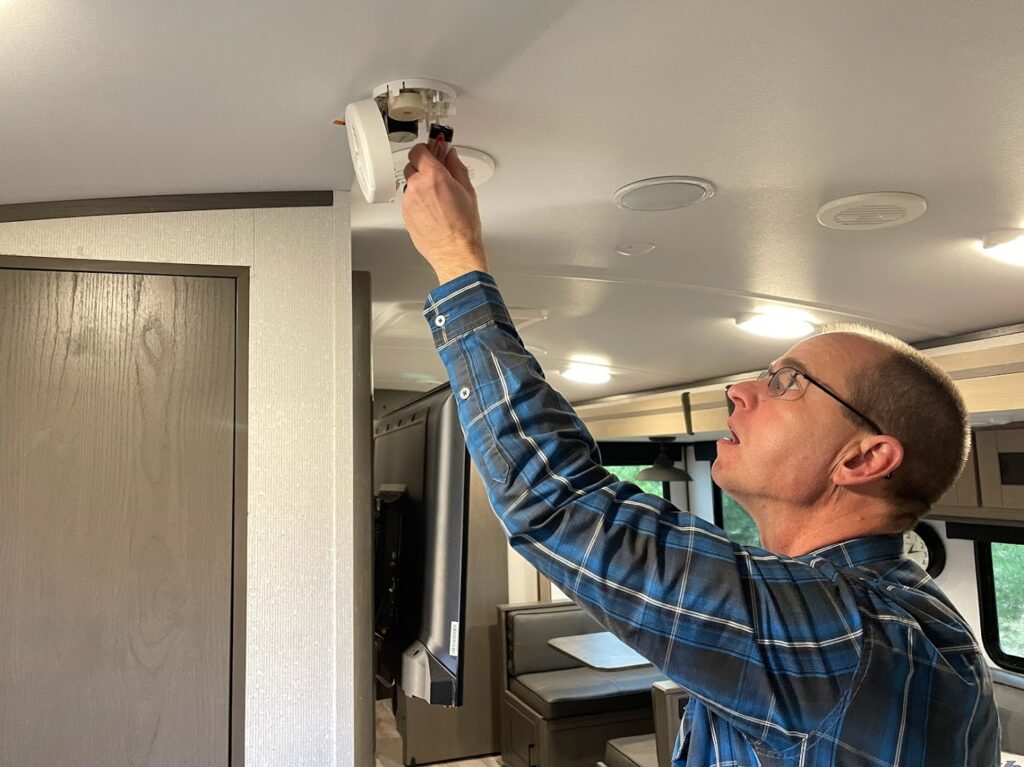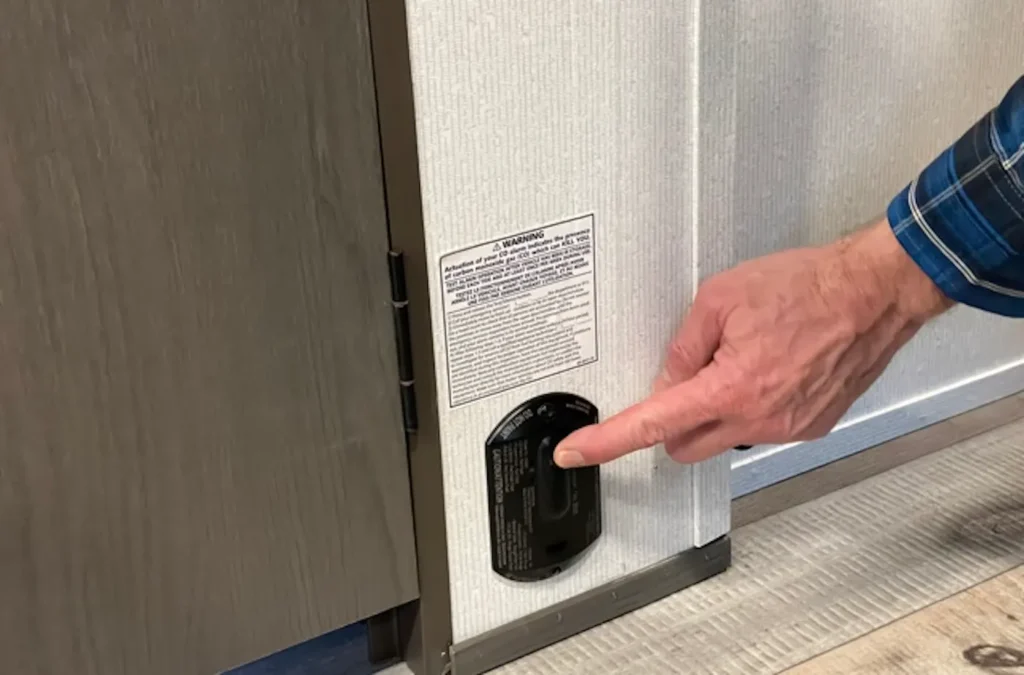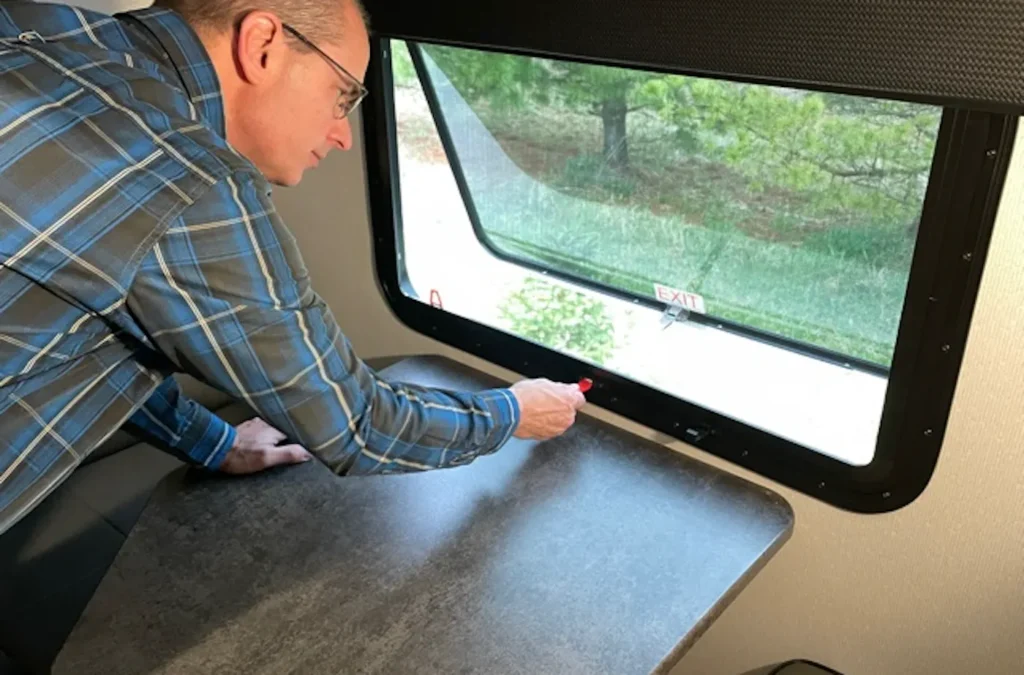Fire Safety: Inside And Outside Your RV
It’s no secret that the number of new RVers has skyrocketed over the past few years. It’s also no secret that owning an RV means facing a learning curve. With the influx of new people entering the RV space, there are some essential maintenance and inspection items that need to be at the top of everyone’s list—one of which is fire safety and prevention. Here are five critical fire safety tips to keep both you and your RV protected.
Check Your Smoke Detectors

Smoke detectors are one of the most critical components for keeping you and your RV safe. According to the National Fire Protection Association (NFPA), smoke alarms play a vital role in the outcome of an RV fire. Between 2008 and 2017, the number of tragic RV fire accidents was about 20 for those without a working smoke detector, compared to only one with a working smoke detector.
Before you head out on a trip, make sure your smoke detector has new batteries and conduct a quick test to ensure that it is working properly. Most detectors have an information sticker on the back to tell you what the pattern and number of beeps mean. Keep in mind that smoke detectors typically have a lifespan of about ten years, so you may need to replace yours. There should be an expiration date on the back or in the owner’s manual. If your detector is past its expiration date, you can find a battery-powered replacement online or at your local hardware store.
Pro Tip: If your RV smoke detector is suddenly chirping every few minutes, this does not mean that it’s broken but rather that the batteries need to be replaced.
Check Your Carbon Monoxide Detector

Carbon monoxide (CO) is formed by the incomplete combustion of fuels. It is a colorless, odorless gas, so you can’t see or smell its presence. Prolonged exposures to CO can cause headaches, dizziness, nausea, even death. If your RV has a propane cooktop or a furnace, CO could appear inside your RV. Additionally, outdoor generators, charcoal grills and running vehicles also produce CO that can end up inside your RV. Be sure to periodically check your CO detector to ensure it’s working properly. Your detector should have a specific “test button” that you simply need to hold for a few seconds until the alarm sounds.
Pro Tip: CO is slightly lighter than air, so it is best to place your CO detector about halfway up your RV’s wall (about five feet up the wall). Do not place your detector near any heating or cooking appliances, or in a bathroom, as these may give inaccurate readings.
Check Your Emergency Egress Windows

When it comes to fire safety, a good rule of thumb is to always have two different escape routes. Some RVs have two entry and exit doors, which can help in the case of an emergency, but many only have one door. In that case, you’ll likely need to escape through a window. Most RVs have emergency egress windows that are larger and can be opened all the way with a lever.
To find your emergency egress windows, look for any windows that are set apart from the others and have red handles or levers. You can usually find these windows in the main living space and main bedroom. Spend a few minutes familiarizing yourself with the lever and practice opening the window. If your emergency window has a screen, locate the pull tabs along the sides and test how the screen pops out.
Pro Tip: If you RV with kids, it’s always a good idea to show them where the emergency windows are located and how to operate them. Be aware of the distance between the emergency window and the ground below, and advise any kids to always jump feet first.
Know Your Fire Extinguishers

One of the best things about RVing is the ability to get out into nature and enjoy the wilderness. This also means that you’re likely far away from civilization and, therefore, local fire departments, so it’s really important to know how to operate a fire extinguisher.
The most effective way to extinguish a small cooking or wastebasket fire is with a dry chemical fire extinguisher. Most RVs have extinguishers mounted on the wall in plain sight or in a kitchen cabinet. The very first step is knowing exactly where your RV’s fire extinguisher is located. The second step is knowing how to use it.
According to the NFPA, the easiest way to remember how to operate a fire extinguisher is the acronym PASS: Pull, Aim, Squeeze, Sweep. Hold the extinguisher with the nozzle pointed towards the fire and pull the pin. Then aim the nozzle towards the base of the fire. Squeeze the trigger slowly and with even pressure. And sweep back and forth in a controlled motion.
Pro Tip: Never throw water onto a cooking fire that involves grease—this will make the fire worse and can create a more dangerous situation.
Campfire Safety

RVing and campfires go hand-in-hand. Even if you feel totally confident with your campfire skills, there are always some necessary precautions to take. Before you even start a campfire, make sure you are allowed to do so. Many places, especially on the West Coast, will have seasonal fire bans. This means no open flames are allowed, which includes campfires, gas lanterns and propane camp stoves. Always check the fire status online or ask someone at a nearby ranger station or campground office.
How To Maintain Fire Safety At Your Campsite
If you are allowed to have a campfire, then be sure to use a fire starter. Avoid using gasoline or other flammable liquid, and make sure your fire is at least 25 feet away from your RV. Double check that your awning isn’t anywhere close to the fire. Keep your campfire small and in a contained space that is clear of any sticks, leaves or low-hanging branches.
Once you have your campfire started, never leave it unattended. One stray ember or spark can easily start a fire outside of your fire ring, so it’s best to have someone watching at all times. If you have young kids, let them know that they should always walk carefully around the fire and never run or play around it. If an accident does happen or an ember lands on your clothes, remember to stop, drop and roll. Stop what you’re doing; cover your face with your hands and drop to the ground; roll around back and forth until the fire is out.
Lastly, when you are finished enjoying your campfire, extinguish it completely. Even if you think the fire has burned down, there might still be some hot embers hidden underneath so always douse your fire with water.
Pro Tip: To be a responsible and considerate RVer, never burn trash or leave trash in your fire ring. You never know what materials your trash is made of, and burning it could cause an explosion.
Brandy and her family are avid campers who enjoy exploring nature and being outside. She is the co-author of Midwest Road Trip Adventures. When she’s not traveling or adventuring, you can find Brandy homeschooling her kids and helping with her grandkids. Brandy and her husband Matt love to RV in their Heartland Sundance Ultra-Lite Travel Trailer. Original blog article can be read here.





